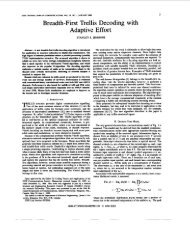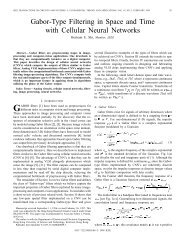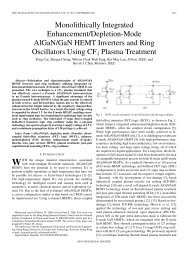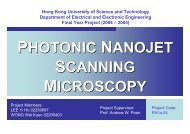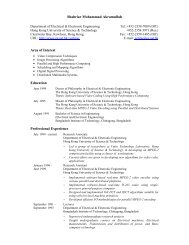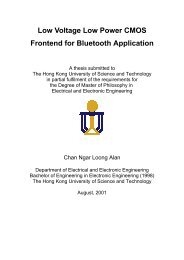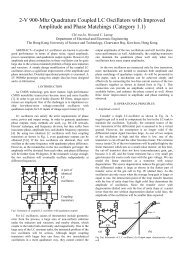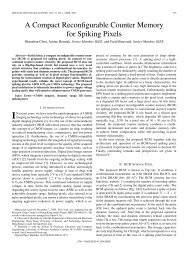Thesis - Department of Electronic & Computer Engineering
Thesis - Department of Electronic & Computer Engineering
Thesis - Department of Electronic & Computer Engineering
Create successful ePaper yourself
Turn your PDF publications into a flip-book with our unique Google optimized e-Paper software.
transmitter chip onto a receiver with the same dimension, as shown in Fig. 3.2 by theblock diagram.Every event is sent onto the bus preserving the timing information by avoiding allsorts <strong>of</strong> handshaking and buffering. To detect collisions, the bus performs the bitwisewired OR operation on the colliding codes. In their implementations, the addresses arecoded with the same numberk<strong>of</strong> “ones” such that a collision, by bitwise ORing twoor more codes, results in a code with at leastk + 1“ones”. For example, if we choosek = 2, suppose the pulse from neuron A coded by “1010”, pulse from neuron Bcoded by “0011”, by bitwise ORing operation on the two codes when there is collisionbetween them, it results in a code “1011”, which has 3 “ones”, rather than 2. This codeis not valid and is automatically ignored by the decoder, which results in the loss <strong>of</strong> thecolliding pulses.Activity-to-frequency conversionPulse accummulationEncoderbusDecoderConverter’s outputReconstructed outputTransmitter chipReceiver chipBusAddress codecollision between1010 0011 1011andFig. 3.2 The non-arbitered communication system20



